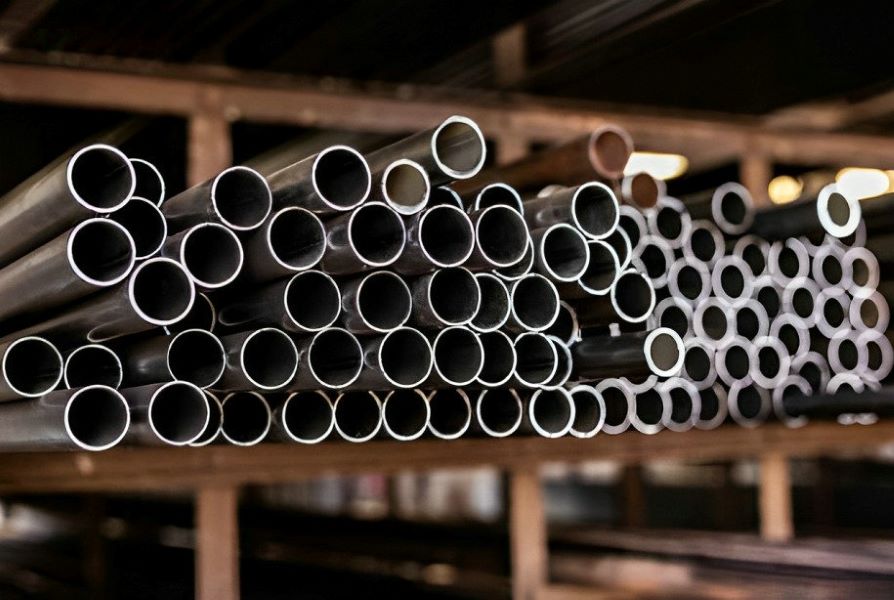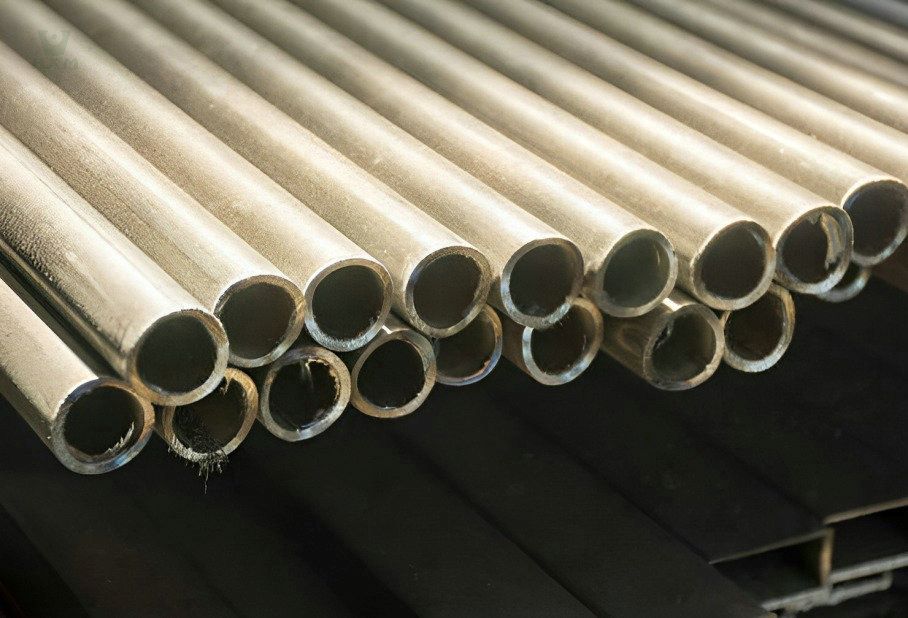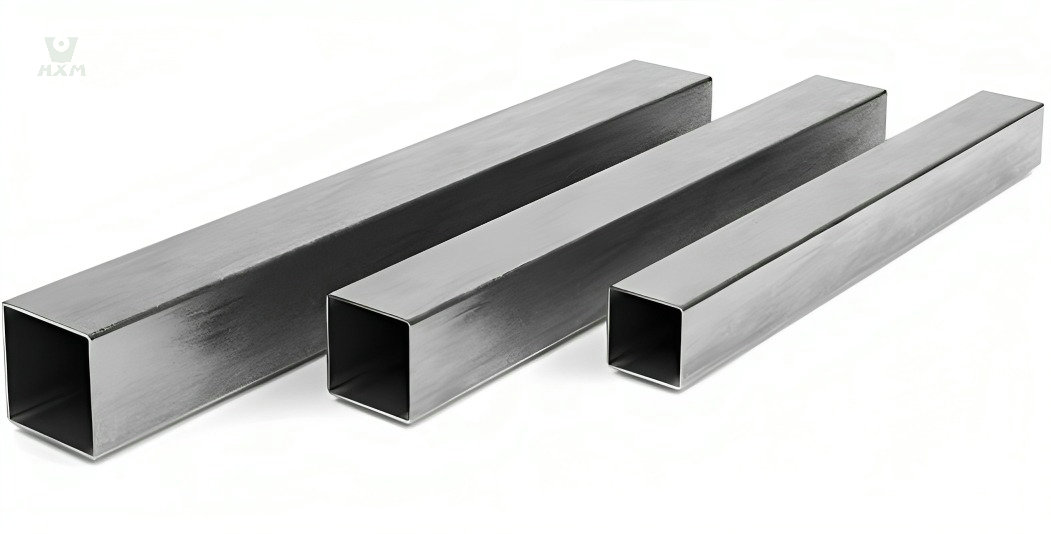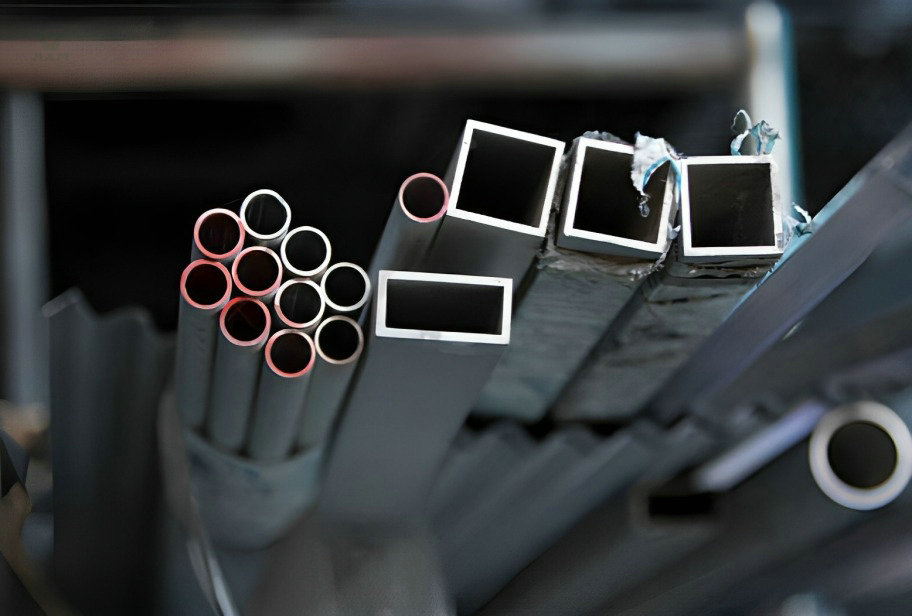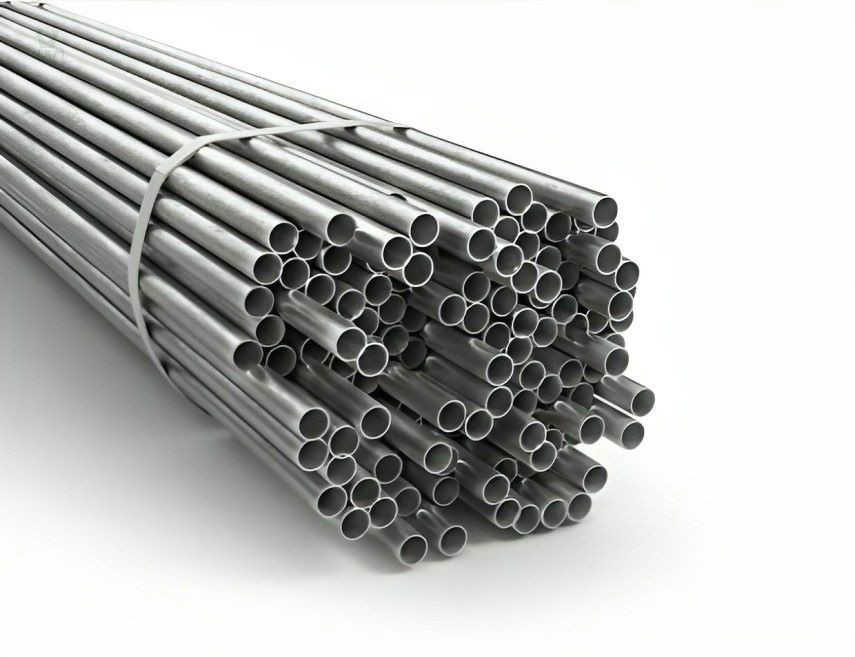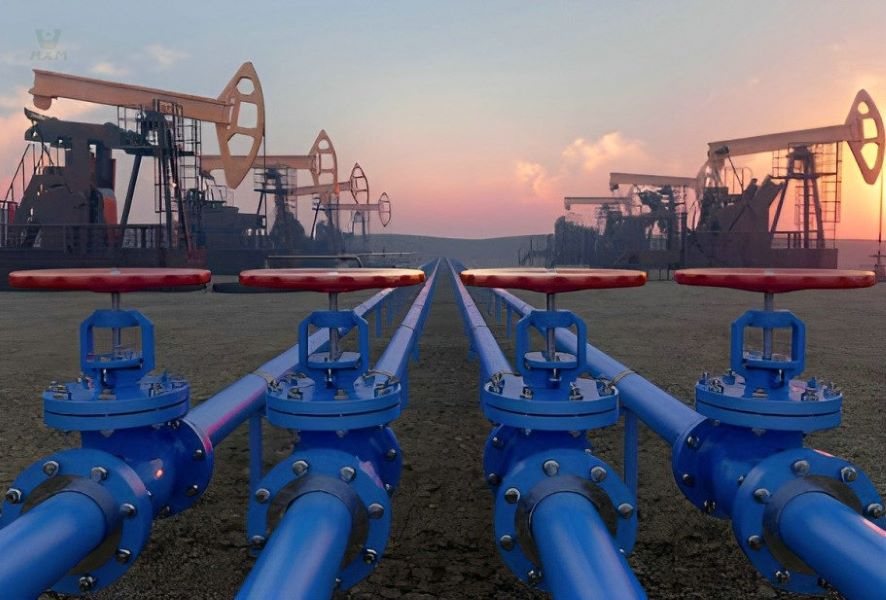Stainless Steel Marine Tubes Supplier
ASTM A312 Seamless and Welded Austenitic Stainless Steel Nominal Tube
ASTM A789 Ferrite and Austenitic Stainless Steel Seamless and Welded Steel Tube for General Use
ASTM A213 Seamless Ferrite and Austenitic Alloy Steel Tube for Boiler, Superheater, and Heat Exchanger
GB/T 14976-2002 Stainless Steel Seamless Pipe for Fluid Transport
Product Description Of Marine Seamless Stainless Steel Pipes
Marine grade stainless steel pipes are designed to provide enhanced resistance to the corrosive effects of saltwater and other reductive media commonly found in marine systems These pipes are typically made from austenitic stainless steel alloys, such as SAE 316, which contain molybdenum to increase their resistance to pitting corrosion.
Marine grade stainless steel pipes offer a number of advantages over other materials, including excellent corrosion resistance, good formability and weldability, and high strength and toughness. They are commonly used in a variety of marine applications, including boat fittings, valves, and pump trims.
specification Of Marine Seamless Stainless Steel Pipes
Production Standard
ASTM A312 Seamless and Welded Austenitic Stainless Steel Nominal Tube
ASTM A789 Ferrite and Austenitic Stainless Steel Seamless and Welded Steel Tube for General Use
ASTM A213 Seamless Ferrite and Austenitic Alloy Steel Tube for Boiler, Superheater, and Heat Exchanger
GB/T 14976-2002 Stainless Steel Seamless Pipe for Fluid Transport
GB/T 12771-2000 Stainless Steel Welded Pipe for Fluid Transport
Main grade chemical components in different standard
201 | C % | Si% | Mn % | P % | S % | Ni % | Cr % | N % | Mo % |
ASTM | 0.15 | 1.00 | 5.5-7.5 | 0.050 | 0.030 | 3.5-5.5 | 16.0-18.0 | 0.25 | – |
DIN/EN | 0,15 | 1,00 | 5,5-7,5 | 0,045 | 0,015 | 3,5-5,5 | 16,0-18,0 | 0,05-0,25 | – |
JIS | 0.15 | 1.00 | 5.5-7.5 | 0.060 | 0.030 | 3.5-5.5 | 16.0-18.0 | 0.25 | – |
GB | 0.15 | 1.00 | 5.5-7.5 | 0.050 | 0.030 | 3.5-5.5 | 16.0-18.0 | 0.05-0.25 | – |
202 | C % | Si% | Mn % | P % | S % | Ni % | Cr % | N % | Mo % |
ASTM | 0.15 | 1.00 | 7.5-10.0 | 0.060 | 0.030 | 4.0-6.0 | 17.0-19.0 | 0.25 | – |
DIN/EN | 0,15 | 1,00 | 7,5-10,5 | 0,045 | 0,015 | 4,0-6,0 | 17,0-19,0 | 0,05-0,25 | – |
JIS | 0.15 | 1.00 | 7.5-10.0 | 0.060 | 0.030 | 4.0-6.0 | 17.0-19.0 | 0.25 | – |
GB | 0.15 | 1.00 | 7.5-10.0 | 0.050 | 0.030 | 4.0-6.0 | 17.0-19.0 | 0.05-0.25 | – |
304 | C % | Si% | Mn % | P % | S % | Ni % | Cr % | N % | Mo % |
ASTM | 0.08 | 0.75 | 2.00 | 0.045 | 0.030 | 8.0 – 10.5 | 18.0-20.0 | 0.10 | – |
DIN/EN | 0,07 | 1,00 | 2,00 | 0,045 | 0,015 | 8,0 – 10,5 | 17,5-19,5 | 0,10 | – |
JIS | 0.08 | 1.00 | 2.00 | 0.045 | 0.030 | 8.0 – 10.5 | 18.0-20.0 | – | – |
GB | 0.08 | 1.00 | 2.00 | 0.045 | 0.030 | 8.0 – 10.0 | 18.0-20. 0 | – | – |
316L | C % | Si% | Mn % | P % | S % | Ni % | Cr % | N % | Mo % |
ASTM | 0.030 | 0.75 | 2.00 | 0.045 | 0.030 | 10.0-14.0 | 16.0-18.0 | 0.10 | 2.00-3.00 |
DIN/EN | 0,030 | 1,00 | 2,00 | 0,045 | 0,015 | 10,0-13,0 | 16,5-18,5 | 0,10 | 2,00-2,50 |
JIS | 0.030 | 1.00 | 2.00 | 0.045 | 0.030 | 12.0-15.0 | 16.0-18.0 | – | 2.00-3.00 |
GB | 0.030 | 0.75 | 2.00 | 0.045 | 0.030 | 10.0-14.0 | 16.0-18.0 | 0.10 | 2.00-3.00 |
409 | C % | Si% | Mn % | P % | S % | Ni % | Cr % | N % | Ti % |
ASTM | 0.08 | 1.00 | 1.00 | 0.045 | 0.03 | 0.50 | 10.5-11.7 | – | 6*C% – 0.75 |
DIN/EN | – | – | – | – | – | – | – | – | – |
JIS | 0.08 | 1.00 | 1.00 | 0.040 | 0.030 | – | 10.5-11.7 | – | 6*C% – 0.75 |
GB | 0.08 | 1.00 | 1.00 | 0.045 | 0.030 | 0.60 | 10.5-11.7 | – | 6*C% – 0.75 |
409L | C % | Si% | Mn % | P % | S % | Ni % | Cr % | N % | Ti % |
ASTM | 0.03 | 1.00 | 1.00 | 0.040 | 0.020 | 0.50 | 10.5-11.7 | 0.03 | 6*(C+N)-0.5 |
DIN/EN | 0.03 | 1.00 | 1.00 | 0.040 | 0.015 | – | 10.5-12.5 | – | 6*(C+N)-0.65 |
JIS | 0.03 | 1.00 | 1.00 | 0.040 | 0.030 | – | 10.5-11.7 | – | 6*C% – 0.75 |
GB | 0.03 | 1.00 | 1.00 | 0.040 | 0.020 | – | 10.5-11.7 | 0.03 | Ti≥8*(C+N) |
410S | C % | Si% | Mn % | P % | S % | Ni % | Cr % | N % | Mo % |
ASTM | 0.08 | 1.00 | 1.00 | 0.040 | 0.030 | 0.60 | 11.5-13.5 | – | – |
DIN/EN | 0,08 | 1,00 | 1,00 | 0,040 | 0,015 | – | 12,0-14,0 | – | – |
JIS | 0.08 | 1.00 | 1.00 | 0.040 | 0.030 | – | 11.5-13.5 | – | – |
GB | 0.08 | 1.00 | 1.00 | 0.040 | 0.030 | 0.60 | 11.5-13.5 | – | – |
features Of Marine Seamless Stainless Steel Pipes
Corrosion resistance is a crucial property of marine seamless stainless steel pipes that ensures their longevity and reliability in challenging marine environments.
Marine seamless stainless steel pipes exhibit exceptional resistance to corrosion due to their unique composition, which includes a high percentage of chromium. Chromium forms a protective oxide layer on the surface of the steel, known as the “passive layer,” which acts as a barrier against corrosive agents such as saltwater and harsh chemicals.
This passive layer prevents direct contact between the metal and the corrosive elements, effectively shielding the pipe from rust and deterioration. Even when exposed to the salty and humid conditions of the marine environment, the passive layer remains intact, ensuring the pipe’s structural integrity over an extended period.
In marine applications, where pipes are constantly exposed to saltwater, moisture, and varying temperatures, corrosion resistance is paramount. Marine seamless stainless steel pipes provide a reliable solution, ensuring that fluid transport, cooling systems, and other vital functions continue without the threat of pipe degradation.
The seamless design of marine seamless stainless steel pipes is a structural characteristic that plays a pivotal role in their performance and suitability for marine applications. Unlike conventional pipes that have welded joints, seamless pipes are crafted through a continuous extrusion process, resulting in a cylindrical shape devoid of any welded seams along their length. This seamless construction offers a host of advantages that contribute to their reliability and durability in marine environments.
One key advantage of the seamless design is its superior strength. Welded seams can potentially create weak points in a pipe, making it susceptible to stress and corrosion. In contrast, seamless pipes lack these vulnerable junctures, thereby enhancing their overall mechanical robustness. This structural integrity is essential for marine applications, as the pipes need to withstand substantial mechanical forces and pressures.
Seamless pipes exhibit uniform wall thickness throughout their length, which contributes to even stress distribution. This uniformity reduces the likelihood of weak spots and ensures consistent performance under varying conditions, such as temperature fluctuations and dynamic loads experienced in marine settings.
Furthermore, the seamless design minimizes the risk of corrosion. Welded seams often create areas prone to corrosion due to differences in metallurgical properties and potential crevices. By eliminating these seams, the susceptibility to corrosion is significantly reduced, enhancing the pipes’ resistance to corrosive marine elements such as saltwater and humidity.
The seamless construction of these pipes allows for precise dimensional control during manufacturing. This accuracy ensures proper fit and compatibility within marine systems, minimizing the need for adjustments or modifications during installation and operation.
High strength is a fundamental mechanical property that characterizes the ability of a material to withstand substantial forces and loads without experiencing deformation or failure. In the context of marine applications, high strength is a critical attribute for ensuring the structural integrity and reliability of components and structures subjected to demanding conditions.
Marine environments subject materials to various forces, including mechanical stresses, dynamic loads, and external pressures. High-strength materials, such as marine-grade stainless steel, possess the capacity to withstand these forces without undergoing excessive deformation or compromise. This is particularly vital in marine settings where structures, equipment, and systems must endure the harsh and unpredictable nature of the sea.
High-strength materials are engineered to have a robust internal microstructure, often featuring enhanced grain boundaries and alloy compositions that contribute to their exceptional mechanical properties. In the case of marine-grade stainless steel, the addition of alloying elements like chromium and nickel enhances its strength while also conferring corrosion resistance.
The high-strength characteristic of materials like marine stainless steel contributes to the overall safety and longevity of marine structures. For instance, ship hulls, offshore platforms, and marine equipment are all subjected to varying loads and environmental stresses. The use of high-strength materials ensures that these components can withstand the challenges posed by rough seas, extreme weather conditions, and the weight of equipment and cargo.
Furthermore, high-strength materials play a crucial role in reducing maintenance and replacement requirements. Components that possess high strength are less likely to experience premature failure, minimizing the need for frequent repairs or replacements. This, in turn, translates to improved operational efficiency, reduced downtime, and cost savings in marine operations.
Uniform wall thickness is a critical attribute that pertains to the consistent thickness of a material, particularly in the context of pipes and structural components. In marine applications, maintaining uniform wall thickness is essential for ensuring structural integrity, predictable performance, and reliable functionality of various systems and structures.
When referring to pipes, uniform wall thickness signifies that the thickness of the pipe’s walls remains constant throughout its entire length. This uniformity is achieved through precise manufacturing processes and quality control measures. In marine seamless stainless steel pipes, for instance, maintaining a uniform wall thickness is of paramount importance.
The presence of uniform wall thickness offers several advantages, particularly in marine environments where materials are subjected to diverse stresses and pressures. One key benefit is the even distribution of mechanical loads. Pipes with uniform wall thickness can evenly distribute the forces they encounter, reducing the likelihood of stress concentration points that could lead to premature failure or deformation.
Predictable performance is another advantage of uniform wall thickness. Engineers and designers can rely on consistent material properties when calculating the pipe’s load-bearing capacity, response to external forces, and overall behavior under varying conditions. This predictability is crucial for ensuring the safety and functionality of marine structures and systems.
In addition, uniform wall thickness is closely linked to manufacturing precision. Modern production techniques, such as advanced extrusion methods, enable the creation of pipes with exceptionally consistent dimensions. This level of precision translates to better compatibility with other components, easier installation, and reduced risk of leaks or inefficiencies in marine systems.
For marine applications, where pipes are used in critical functions like fluid transport, cooling, and fuel systems, maintaining uniform wall thickness is essential. It ensures that the pipes can handle the demanding conditions of the marine environment, including exposure to saltwater, temperature fluctuations, and mechanical stresses.
A smooth interior surface is a vital attribute in various engineering applications, particularly in the context of pipes and conduits used in marine environments. In marine systems, a smooth interior surface refers to the absence of roughness, irregularities, or protrusions within the inner walls of pipes. This characteristic offers numerous advantages that contribute to efficient fluid flow, reduced frictional losses, and enhanced overall performance.
In marine seamless stainless steel pipes, for instance, a smooth interior surface is achieved through advanced manufacturing techniques that eliminate imperfections and irregularities. This smoothness has a profound impact on fluid dynamics within the pipe. When fluids, such as water, gases, or chemicals, flow through a smooth pipe, they encounter minimal resistance. This reduces turbulence and friction, allowing the fluid to move more freely and efficiently.
Efficient fluid flow is critical in marine applications where the timely transport of liquids or gases is essential for various processes. Cooling systems, fuel lines, and fluid circulation networks all rely on the unobstructed movement of fluids. A smooth interior surface ensures that the flow rate is optimized, minimizing energy losses and maintaining consistent system performance.
Furthermore, a smooth interior surface prevents the accumulation of debris, sediment, and particles within the pipe. In marine environments, where contaminants like marine organisms, sediment, and minerals are prevalent, a smooth surface hinders the adhesion and buildup of these materials. This, in turn, reduces the risk of clogs, blockages, or corrosion caused by trapped particles, enhancing the longevity of the pipes and maintaining the efficiency of marine systems.
The benefits of a smooth interior surface extend beyond fluid dynamics. Inspection and maintenance become simpler and more effective. The absence of irregularities makes it easier to assess the condition of the pipes, identify potential issues, and implement necessary maintenance or repairs. This streamlined maintenance process contributes to the overall reliability of marine systems.
Application Of Marine Seamless Stainless Steel Pipes
Let’s dive into a more detailed explanation of the applications of marine seamless stainless steel pipes based on the provided classifications:
Conventional Systems
- Ballast Water: Marine seamless stainless steel pipes are used to transport and distribute ballast water, which is taken on or discharged to adjust the vessel's stability and draft.
- Bilge Water: These pipes handle bilge water, which accumulates in the lower compartments of the ship and needs to be efficiently drained to maintain vessel safety.
- Drainage Systems: Seamless stainless steel pipes play a role in draining wastewater and other fluids from different areas of the ship, ensuring a clean and functional environment.
- Air Systems: These pipes are essential for supplying and distributing air throughout the ship for ventilation, control systems, and crew comfort.
- Measurement: Fluids for measurement and analysis, such as fuel, oil, or chemicals, are transported through these pipes to various monitoring and measurement points on the vessel.
- Injection Systems: Marine seamless stainless steel pipes are used in systems that deliver fluids for injection processes, which can include chemicals, additives, or treatment agents.
- Potable Water: Seamless pipes are responsible for conveying potable water for drinking, cooking, and other essential uses by the crew and passengers.
- Firefighting: These pipes deliver water or firefighting agents to the ship's firefighting systems, ensuring quick response in case of a fire emergency.
- Fuel and Oil: Marine seamless stainless steel pipes transport fuel and oil for engines, generators, and other machinery, supporting the vessel's propulsion and power generation.
- Inert Gas Systems: These pipes distribute inert gases, such as nitrogen or carbon dioxide, for safety measures like fire prevention and cargo preservation.
- Heating and Cooling: Seamless pipes convey fluids for temperature control, supporting heating and cooling systems vital for crew comfort and machinery operation.
- Cleaning: Water for cleaning and sanitation purposes is transported through these pipes to maintain hygiene and cleanliness on the vessel.
- Foam Fire Sprinklers: Pipes are used to distribute foam for effective fire suppression in various areas of the ship.
- Steam: Steam is transported through these pipes for multiple applications, including heating, power generation, and industrial processes.
- Level Measurement: Fluids are conveyed for accurate level measurement, essential for monitoring and managing various tanks and compartments on the vessel.
- Remote Valve Control: These pipes transmit signals for remote valve operation, allowing for efficient and precise control of fluid flow throughout the ship.
Specialized Systems
- Liquefied Petroleum Gas (LPG): Marine seamless stainless steel pipes are employed in transporting LPG, a hydrocarbon gas used as fuel or refrigerant, in vessels specifically designed for LPG transport.
- Liquefied Natural Gas (LNG): These pipes handle LNG, a cryogenic liquid used as fuel, which requires specialized systems and materials due to its extremely low temperature and unique properties.
In summary, marine seamless stainless steel pipes are versatile components that serve a wide array of critical functions in conventional and specialized systems on ships and marine structures. Their reliable performance, corrosion resistance, and durability contribute to the safe and efficient operation of various maritime processes.
FAQ
Marine grade stainless steel pipes are made from alloys that contain molybdenum to resist the corrosive effects of salt in seawater. The most common marine grade stainless steel is SAE 316, which is an austenitic alloy steel.
The process of manufacturing marine grade stainless steel pipes involves several steps. First, the raw materials, such as iron, nickel, chromium, and molybdenum, are melted together in an electric furnace. The molten metal is then poured into molds to form ingots or slabs, which are then hot-rolled into the desired shape.
After hot-rolling, the pipes are heat-treated to improve their mechanical properties and corrosion resistance. This involves heating the pipes to a high temperature and then rapidly cooling them in water or air. The pipes are then cold-worked to achieve the desired dimensions and surface finish.
Finally, the pipes are tested to ensure that they meet the required standards for use in marine environments. This includes tests for mechanical properties, such as tensile strength and hardness, as well as tests for corrosion resistance.
The advantage of using seamless stainless steel pipes in marine applications is significant. These pipes, supplied by reputable stainless steel pipe suppliers, offer unparalleled benefits due to their seamless construction and stainless steel composition.
The absence of welded seams in seamless stainless steel pipes eliminates potential weak points that could be susceptible to corrosion, leaks, and structural failures. This enhances their overall strength and integrity, ensuring reliable performance even in the demanding and corrosive marine environment.
Stainless steel’s inherent corrosion resistance is further amplified in seamless pipes. The smooth, continuous surface minimizes crevices where corrosive agents can accumulate, making them highly durable and extending their service life in marine conditions.
Efficient fluid transport is crucial in marine systems, and seamless stainless steel pipes excel in this aspect. Their smooth interior surface reduces friction, allowing fluids to flow more freely and efficiently. This contributes to optimized system performance, energy savings, and streamlined operations.
Seamless stainless steel pipes are also versatile and adaptable, suitable for a range of marine applications including fluid transport, cooling systems, and firefighting. They can withstand extreme temperatures, varying pressures, and exposure to diverse chemicals and fluids encountered at sea.
In summary, the use of seamless stainless steel pipes from reputable stainless steel pipe suppliers offers advantages such as exceptional corrosion resistance, high strength, efficient fluid flow, adaptability to marine conditions, and enhanced system reliability. These factors collectively make seamless stainless steel pipes a superior choice for marine applications, ensuring safe and efficient maritime operations.
Marine seamless stainless steel pipes adhere to a range of rigorous standards and certifications, ensuring their quality and suitability for maritime applications. Reputable stainless steel pipe suppliers provide pipes that conform to recognized industry requirements, including standards set by organizations such as ASTM, ASME, SPI, EN, JIS, DIN, GB, RS, ABS, BV, CCS, and RINA.
These standards encompass various aspects such as material composition, manufacturing processes, dimensions, mechanical properties, and corrosion resistance. Compliance with these standards guarantees that the marine seamless stainless steel pipes meet stringent criteria for performance, safety, and durability in the challenging marine environment.
Certifications from classification societies like ABS, BV, CCS, and RINA further validate the pipes’ adherence to industry norms and regulations. These certifications offer assurance to marine operators, shipbuilders, and engineers that the stainless steel pipes supplied by reputable suppliers are of high quality and suitable for marine applications.
In essence, marine seamless stainless steel pipes, supplied by trusted stainless steel pipe suppliers, carry a comprehensive suite of standards and certifications that underline their reliability and capability to withstand the demanding conditions of the maritime domain.
Marine seamless stainless steel pipes, supplied by reputable stainless steel pipe suppliers, come in a range of sizes and diameters to accommodate diverse marine applications. The sizes and diameters of these pipes vary based on the specific requirements of marine systems and structures.
Typically, marine seamless stainless steel pipes are available in both large and small diameters. Larger diameters are suitable for bulk transport of fluids like water, fuel, and oil, where efficient flow and distribution are paramount. Smaller diameters are used for precision applications such as measurement, injection, and specialized systems.
Reputable stainless steel pipe suppliers offer a variety of standardized sizes, and they also have the capability to provide customized solutions to meet unique marine engineering needs. This flexibility ensures that marine seamless stainless steel pipes can be tailored to fit specific requirements, contributing to efficient fluid transport, structural integrity, and overall system performance in maritime operations.
Maintenance for marine seamless stainless steel pipes, sourced from reliable stainless steel pipe suppliers, is relatively straightforward due to their inherent corrosion resistance and durability. Proper maintenance practices help ensure their continued performance and longevity in challenging marine environments.
Regular inspections are essential to identify any signs of corrosion, wear, or damage. Stainless steel’s resistance to corrosion is a key advantage, but periodic checks help detect any potential issues early on. These inspections can be scheduled as part of routine maintenance procedures.
Cleaning the pipes periodically helps prevent the buildup of marine organisms, sediment, and debris on their surfaces. This can be done using appropriate cleaning agents and techniques recommended by the stainless steel pipe suppliers or industry guidelines.
Applying corrosion inhibitors or protective coatings can provide an additional layer of defense against corrosive elements, particularly in areas where pipes may be exposed to more severe conditions.
In the event of any observed corrosion or damage, prompt action should be taken. Depending on the extent of the issue, this might involve repairs, replacement of sections, or seeking guidance from the stainless steel pipe suppliers for appropriate solutions.
Overall, while marine seamless stainless steel pipes require minimal maintenance, regular inspections, cleaning, and proactive measures can significantly extend their service life and maintain their optimal performance in marine applications.
Yes, marine seamless stainless steel pipes, sourced from reputable stainless steel pipe suppliers, are considered environmentally friendly for several reasons.
- Recyclability: Stainless steel is a highly recyclable material. At the end of its useful life, marine seamless stainless steel pipes can be recycled and repurposed, reducing the demand for new raw materials and minimizing waste.
- Longevity: The inherent corrosion resistance and durability of stainless steel contribute to the long service life of marine seamless stainless steel pipes. This longevity reduces the need for frequent replacements, which in turn reduces resource consumption and waste generation.
- Reduced Environmental Impact: The use of stainless steel pipes in marine applications helps minimize the potential for leaks, failures, and maintenance-related issues. This leads to reduced fluid spills or releases into the marine environment, contributing to a lower environmental impact.
- Energy Efficiency: Seamless stainless steel pipes facilitate efficient fluid transport due to their smooth interior surfaces, reducing friction and energy losses. This efficiency translates to lower energy consumption during fluid transport, promoting energy efficiency and sustainability.
- Corrosion Resistance: The corrosion resistance of stainless steel pipes ensures that they maintain their structural integrity and performance over time. This minimizes the need for frequent repairs or replacements, reducing the overall environmental footprint associated with maintenance activities.
- Compatibility with Regulations: Stainless steel pipes often comply with environmental regulations and standards, ensuring that their use aligns with sustainable practices and requirements.
By choosing marine seamless stainless steel pipes from reputable stainless steel pipe suppliers, marine industries contribute to environmentally friendly practices, reduce waste generation, and support sustainable resource management in maritime operations.
other products
Get In touch
Ready to Elevate Your Projects? Dive into our Stainless Steel Collection and Submit Your Specifications Today!
Phone/WhatsApp/WeChat:
+86 13052085117
Email: [email protected]
Address: RM557, NO.1388 Jiangyue Road, Shanghai China


